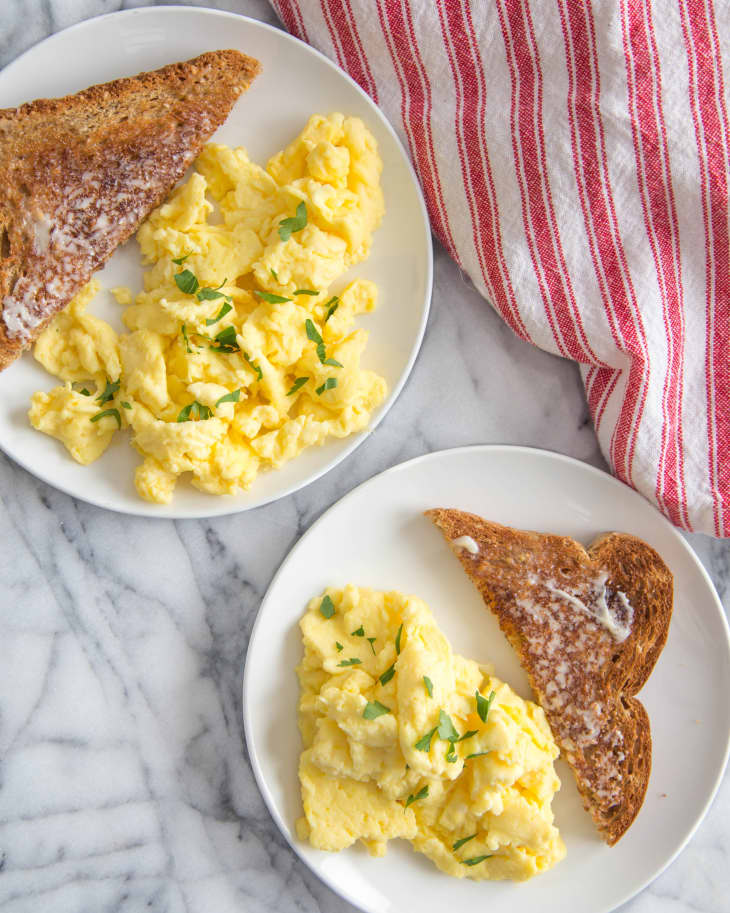The Secret to Fluffy Diner-Style Eggs Is Actually a Coffee Tool
Scrambling eggs “perfectly” is a matter of great debate among food professionals. It’s both an art held in high esteem, and a science based in the complicated ways that protein molecules interact with fat, and heat, and each other. But if you’re anything like me — and my 11-year-old son, apparently — in the end, you just want a plate of fluffy, creamy, not-too-watery (and also not-too-dry!) scrambled eggs. And you want them without fuss or much cleanup. Well, we’ve discovered the secret: a wand milk frother.
Frothed Eggs Are Fluffy and Creamy
One morning, my son, who’s an enthusiastic, experimental, and slightly cockamamie aspiring home cook, declared that he’d made the best scrambled eggs ever using my husband’s wand milk frother. My first thought was “ewww“. One sloppy wash and you’re in a world of extra gross cross-contamination. But once I realized that the frother part of the tool is dishwasher-safe, I was intrigued.
I tried my son’s milk-frother eggs and, it was true, they were some of the best I’d ever eaten: fluffy, creamy, and full of flavor. But why? One theory is that the uniformity of the frothed eggs leads to a better texture and flavor than when you whisk by hand, which doesn’t blend the egg whites and yolks as thoroughly. Another possible explanation: the frother aerates the eggs, helping to keep them fluffy even after they hit the fat in your hot pan. I’d also guess that the way the frother jostles the proteins must be a factor as well, but it’s just a guess. What’s not a guess? They’re absolutely delicious.
As with almost any cooking method, there are naysayers. I have read that some people think it’s a terrible idea to whip eggs in the blender, which works on a similar principle (but requires more cleanup, making our milk frother method superior, thank you very much). These naysayers also talk about proteins and fats and heat, and contend that frothing the whites and then very gently folding in the egg yolks right before cooking is the way to go.
I’ve tried this method and not only does it require two bowls (I’ve been clear on where I stand with cleanup, right?), but the eggs aren’t as delicious. You can’t quite get the egg yolks uniform without “breaking” the whites, so the flavor isn’t as pronounced and, as egg whites tend to do, the final product weeps if left to sit for even just a couple of minutes.
How to Make Milk Frother Scrambled Eggs
Convinced? I thought so. Now it’s time to give it a try yourself. The technique couldn’t be simpler. Here’s how to do it.
- Crack eggs in a bowl.
- Using a wand milk frother, froth the eggs until they turn a uniform pale yellow and develop a soft but sturdy foam, which will take anywhere from 1 to 1 1/2 minutes. (The exact timing will depend on how many eggs you’re cooking.)
- Heat your pan over medium-low heat. If your frothy eggs sit for more than a minute while your pan heats up, give them one more whiz right before gently pouring them into the pan. You want more foam than liquid.
- Using a silicone spatula, very gently fold the eggs a few times, allowing them to cook through. Salt and pepper the eggs as you cook.
